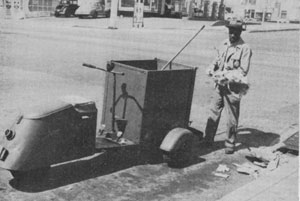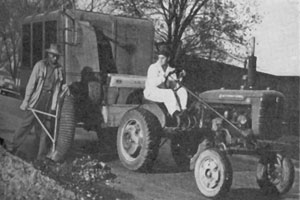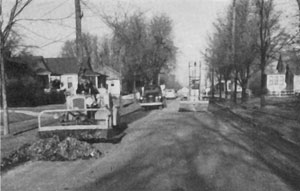Cities emphasize the basics: Keeping the streets clean
 Sometimes, local government is about matters of taxing, public safety and budgets. Other times, though, it’s about really important issues — like keeping the streets clean. The topic got the full treatment in the January 1951 edition of The American City with a report on “Elements of Good Street Cleaning.”
Sometimes, local government is about matters of taxing, public safety and budgets. Other times, though, it’s about really important issues — like keeping the streets clean. The topic got the full treatment in the January 1951 edition of The American City with a report on “Elements of Good Street Cleaning.”
The article emphasized the importance of street cleaning. “A city with clean, well-kept streets is invariably a city with clean government and a responsible citizenry.”
 The piece went on to explain the various classifications of street cleaning, no easy matter. For example, there was the “beat patrol” — basically a worker with a push broom and a cart. The worker patrols a definite “beat,” hence the name.
The piece went on to explain the various classifications of street cleaning, no easy matter. For example, there was the “beat patrol” — basically a worker with a push broom and a cart. The worker patrols a definite “beat,” hence the name.
Another street cleaning classification was “gang sweeping.” Again, the name describes the job, with several cleaners working together. Officials in San Diego added a new wrinkle when they assigned each worker a small motor-scooter with a cart attached to it.
 The article addressed best practices of street cleaning, such as how often a city’s streets should be swept and how much it should cost. Then there was the matter of equipment, ranging from ordinary tractors to a giant vacuum-like device to suck up leaves in Schenectady, N.Y.
The article addressed best practices of street cleaning, such as how often a city’s streets should be swept and how much it should cost. Then there was the matter of equipment, ranging from ordinary tractors to a giant vacuum-like device to suck up leaves in Schenectady, N.Y.
Proper street sweeping management requires good math skills, the article noted. For example, the superintendent of street sweeping in Jackson, Miss., reported using this complicated formula:
“Nine 2 ½-yard dump trucks operated with three laborers and a driver. The crews work on two shifts. The night shift sweeps nine miles of gutters every night, the sidewalks on Saturday night and six paved alleys nightly. The day shift sweeps 65.5 miles of gutters three times weekly. Jackson has 74.5 miles of pavement requiring sweeping.”
Whew, who knew street sweeping was so complicated?





















